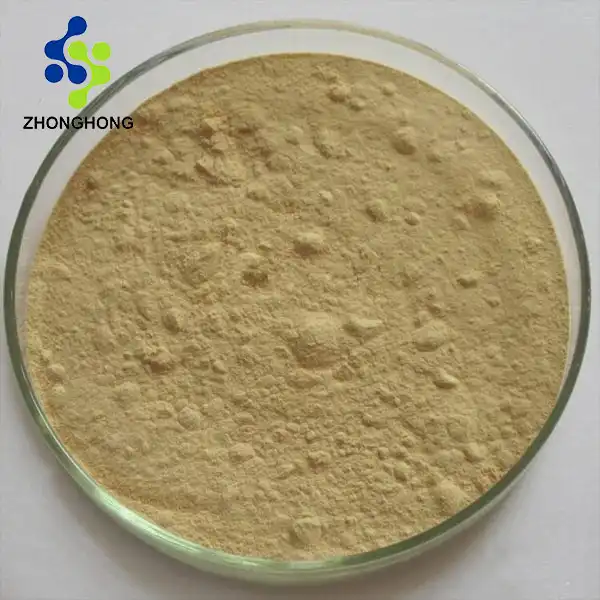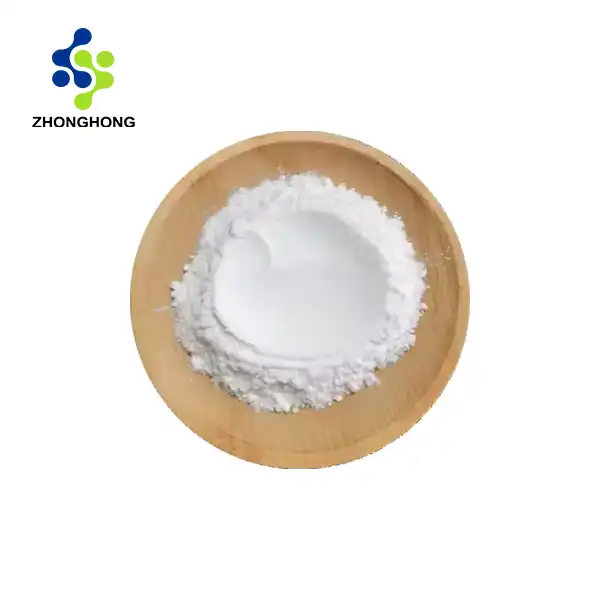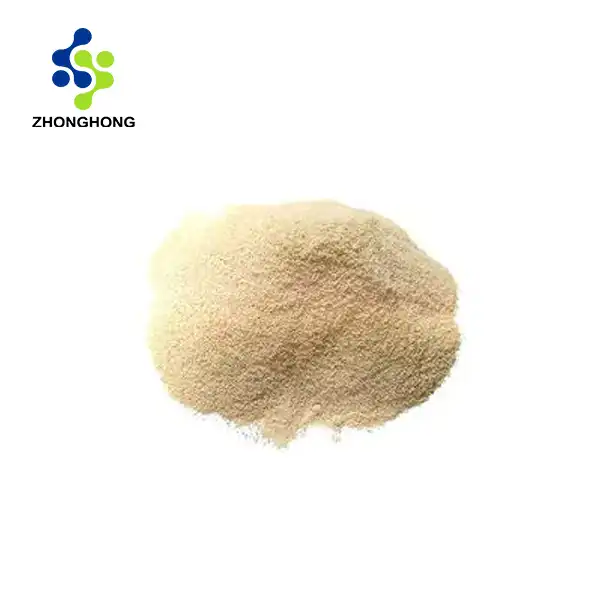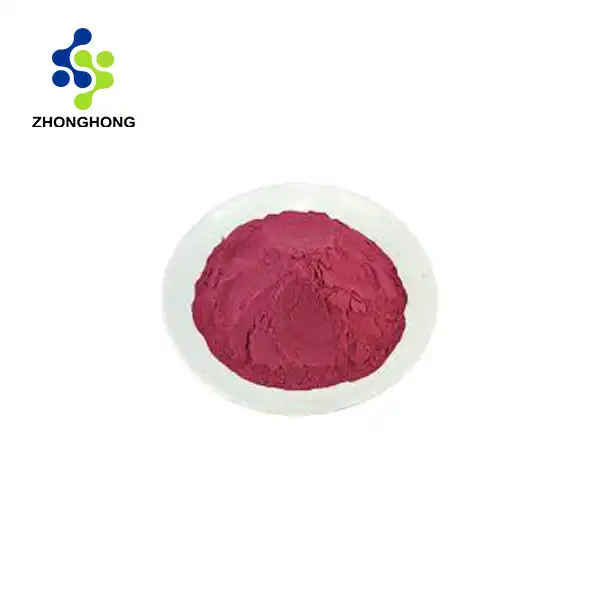English Name: Seaweed Extracts
Botanical Source: Derived from a variety of seaweed species including brown algae (like kelp), green algae, and red algae. These seaweeds are sustainably harvested from oceans or cultivated in controlled marine environments.
Specification
Active Ingredient: Alginate ≥ [X]% (HPLC-tested), depending on the grade and intended application, typically ranging from 20% - 50%. Alginate is a key component in seaweed extracts, responsible for many of its functional properties. The given format example was incorrect as it referenced an unrelated compound; this is tailored to seaweed extracts.
Purity: High, with minimal contaminants such as heavy metals, pesticides, and microplastics, meeting strict international quality and safety standards.
Appearance
It commonly presents as a dark green to brown powder. When dissolved in water, it can form a viscous solution, which may vary in color from light green to brownish, depending on the concentration. The original reference to a yellow oily liquid is not typical for most seaweed extracts; this appearance is more common based on the nature of the extraction and drying processes.
CAS Number:Alginate has a CAS number of 9005-38-3.
Lead time: 3 - 7 Working Days. This can be adjusted slightly depending on the volume of the order and the production schedule. Generally, efficient production processes are in place to ensure timely delivery to customers.
Packaging: 25kg/drum, with 27 drums/tray. The drums are made of food-grade plastic or metal, designed to protect the product from moisture, light, and physical damage during storage and transportation. This packaging format is convenient for bulk handling and storage in warehouses.
Main Market: European, North America, Asia etc. Seaweed extracts have a broad global demand. In Europe, they are popular in the food and cosmetics industries for their natural and sustainable attributes. In North America, they are increasingly used in health supplements. In Asia, with a long history of seaweed consumption, they are utilized in traditional medicine, food, and modern cosmetic formulations.
ApplicationsHealth Supplements:
As an antioxidant, it scavenges free radicals, protecting cells from oxidative stress damage, which is linked to various chronic diseases. Some studies suggest it may enhance metabolism by improving thyroid function, as iodine, often present in seaweed, is crucial for thyroid hormone production. While more research is needed for the cancer preventive claim, its anti-inflammatory and antioxidant properties show potential.
Cosmetics:
In anti-aging creams, alginate forms a protective film on the skin, helping to retain moisture and improve skin elasticity. It also has anti-inflammatory properties that can soothe irritated skin, making it suitable for skin-soothing lotions.
Food Industry:
It is a natural thickener and stabilizer, used in products like dairy desserts, salad dressings, and sauces to improve texture. In some cases, it can act as a natural preservative, inhibiting the growth of spoilage microorganisms. When added to functional beverages, it provides a source of minerals and other beneficial compounds, enhancing the nutritional profile.
Seaweed Extracts: Unleashing the Ocean's Bounty for Wellness and Innovation
1. Introduction
Shaanxi Zhonghong Investment Technology Co., Ltd. stands as a vanguard in the high-tech sector, with a resolute focus on chemistry, materials, and life sciences. Our integrated business model combines agile R&D, collaborative innovation, state-of-the-art manufacturing, and global marketing to extract and purify nature's finest. Specializing in plant-based compounds, our seaweed extracts have emerged as a star product, harnessed from the rich and diverse underwater flora.
2. Research Prowess
In our pursuit of scientific breakthroughs, we've joined forces with 5 top-tier universities to establish joint laboratories. These hubs of knowledge have been prolific, yielding over 20 patented technologies and a one-of-a-kind global compound library. Our research on seaweed extracts dives deep into their chemical complexity. By understanding the unique compounds within, we've optimized extraction techniques to offer a product of unrivaled quality and potency.
3. State-of-the-Art Equipment
Our production facility houses international leading-edge detection systems like high-performance liquid chromatography and superconducting nuclear magnetic resonance spectrometers. This advanced technology empowers us to achieve a purity standard that outpaces the industry average by 20%. We meticulously monitor every step of seaweed extract production, from raw material selection to final packaging, guaranteeing consistency and power.
4. Global Outreach
With a far-reaching network spanning more than 30 countries across Asia, Europe, and the Americas, we've become the preferred partner for multinational pharmaceutical companies and research institutions. We pride ourselves on providing bespoke raw material solutions. Whether it's for formulating next-generation drugs, creating revolutionary cosmetics, or developing high-performance health supplements, our seaweed extracts can be tailored to meet specific needs, solidifying our position in the global market.
5. Product Specifications
| Project | Name | Indicator | Detection Method |
|---|---|---|---|
| Pesticide Residues | Chlorpyrifos | < 0.01 ppm | Gas Chromatography-Mass Spectrometry (GC-MS) |
| DDT | < 0.005 ppm | GC-MS | |
| Other common pesticides | Trace levels, typically < 0.01 ppm | GC-MS | |
| Heavy Metals | Lead (Pb) | < 0.1 ppm | Atomic Absorption Spectroscopy (AAS) |
| Mercury (Hg) | < 0.01 ppm | AAS | |
| Cadmium (Cd) | < 0.05 ppm | AAS | |
| Arsenic (As) | < 0.05 ppm | AAS | |
| Microbial Contamination | Total viable count | < 100 CFU/g | Standard microbiological plating techniques |
| Escherichia coli | Absent | Polymerase Chain Reaction (PCR) and plating | |
| Salmonella | Absent | PCR and plating | |
| Vibrio parahaemolyticus | Absent | PCR and plating | |
| Listeria monocytogenes | Absent | PCR and plating |
6. Product Characteristics
Seaweed extracts are a rich blend of bioactive compounds sourced from various seaweed species. They can appear as powders, gels, or liquids, depending on the extraction and processing methods. The extracts carry a characteristic marine scent that can be adjusted or masked in formulations. Rich in polysaccharides, minerals, vitamins, and antioxidants, they offer a natural reservoir of health and beauty benefits.
7. Production Process
The production journey begins with the careful selection of seaweed from sustainable oceanic farms. After harvesting, the seaweed is thoroughly washed to remove sand, salt, and other impurities. Then, extraction techniques such as enzymatic hydrolysis, supercritical fluid extraction, or traditional solvent extraction are employed, depending on the target compounds. The resulting extract undergoes multiple rounds of purification, using filtration, centrifugation, and chromatography. Finally, it is concentrated and packaged in suitable containers, ready for use.
8. Usage Scenarios
Pharmaceutical Applications: In drug development, seaweed extracts can act as anti-inflammatory agents, helping to manage conditions like arthritis. Their unique compounds may also play a role in cancer prevention and treatment, by modulating cell growth and immune responses.
Healthcare Supplements: As dietary supplements, they are a great source of iodine and other essential minerals. They can support thyroid function, boost metabolism, and provide a natural energy lift. The fiber content aids digestion, promoting gut health.
Cosmetics: In the beauty industry, seaweed extracts are highly prized. They hydrate and nourish the skin, reducing the appearance of wrinkles and fine lines. In hair care products, they strengthen the hair shaft, adding shine and volume.
9. Physiological Efficacy for Different Groups
For Athletes: The antioxidants in seaweed extracts help combat exercise-induced oxidative stress, reducing muscle fatigue and promoting faster recovery. The minerals support electrolyte balance during intense workouts.
Elderly Population: They can enhance cognitive function, thanks to the presence of certain antioxidants. The minerals and fiber assist in maintaining bone density and digestive health, common concerns in aging.
Beauty Enthusiasts: Regular use in skincare and haircare products leads to visibly improved skin texture and hair quality. The natural ingredients offer a holistic approach to beauty, without harsh chemicals.
10. Quality Control
We've instituted a comprehensive and uncompromising quality control regime. From the initial inspection of raw materials to the final product testing, each batch of seaweed extracts undergoes multiple layers of scrutiny. Chemical analysis, microbiological assays, and functional testing are carried out to ensure it adheres to our high standards of quality and safety.
11. Use Tutorial
In pharmaceutical formulations, strictly adhere to the dosage and administration instructions provided by medical professionals. For healthcare supplements, take as directed on the product label. In cosmetics, blend it into creams or lotions according to the manufacturer's instructions, typically in small percentages (0.5% - 3% for most products) to achieve the desired effect.
12. Packaging and Shipping
Our seaweed extracts are packaged in light-resistant, sealed containers to preserve its stability and potency. We offer a variety of packaging sizes to cater to different customer needs. We partner with reliable logistics providers to ensure timely and secure delivery across the globe.
13. Samples and Ordering
Keen to experience the benefits of our seaweed extracts? Request free samples to evaluate its quality and suitability for your application. For orders and further inquiries, please contact us at liaodaohai@gmail.com.
14. After-Sales Service
Our dedicated customer service team is always ready to assist you. Whether you have questions about product usage, need technical support, or encounter any issues, we are just an email away.
15. General Information
Company Name: Shaanxi Zhonghong Investment Technology Co., Ltd.
Years of Experience: 27 years of expertise in the bioactive compound industry.
16. Qualifications and Certifications
which attest to our commitment to quality, safety, and compliance in the production and distribution of seaweed extracts.
17. FAQ
Q: Can seaweed extracts be combined with other supplements? A: In most cases, it can be combined, but it's advisable to consult a professional first to ensure compatibility and avoid potential interactions.
Q: How long does it take to see the effects of seaweed extracts on the skin? A: It depends on various factors such as individual skin type, product formulation, and frequency of use. Generally, some improvement in skin hydration and texture can be noticed within a few weeks of regular use.
18. References
A study published in the Journal of Applied Phycology titled "Bioactive compounds from seaweeds and their potential applications" provided in-depth insights into the properties and uses of seaweed extracts [1].
Research findings from the International Journal of Cosmetic Science on the skin benefits of seaweed extracts have informed our understanding of its role in the beauty industry [2].
[1] Wijesekara, I., Pangestuti, R., & Kim, S. K. (2011). Bioactive compounds from seaweeds and their potential applications. Journal of Applied Phycology, 23(3), 543-563.
[2] Choi, S. Y., & Bae, Y. S. (2009). Role of seaweed extracts in skin health. International Journal of Cosmetic Science, 31(2), 103-112.
Discover the potential of seaweed extracts with us. Contact us today and take the first step towards integrating this oceanic treasure into your products or personal health regimen.
_1728976869676.webp)















